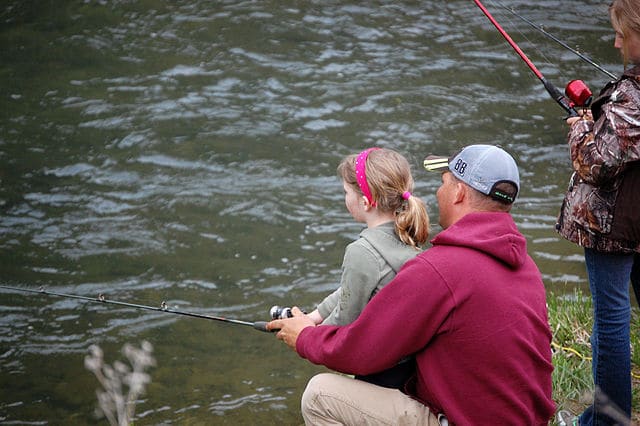
Few memories last as long as those surrounding your first fishing trip. You probably still remember the sights, sounds and smiles of the occasion vividly, and you probably look back on the outing fondly. Now, so many years later, it is time to introduce your children to angling.
You certainly don’t have to do anything fancy to introduce children to the sport, but it helps to have a good game plan in place.
After all, you may be introducing your children to a lifelong hobby, and you want to get started on the right foot.
Good Gear for Kids
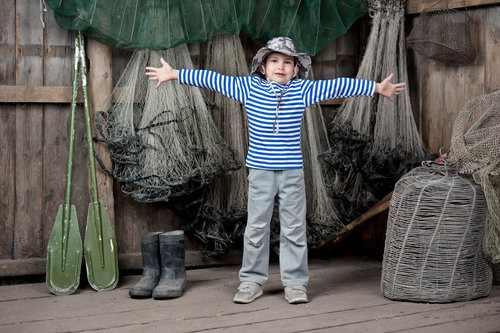 Adult anglers often enjoy using the most complicated and nuanced tackle and presentations possible in pursuit of their quarry, but this is obviously not a good idea for youngsters. When fishing with kids, simplicity is the name of the game.
Adult anglers often enjoy using the most complicated and nuanced tackle and presentations possible in pursuit of their quarry, but this is obviously not a good idea for youngsters. When fishing with kids, simplicity is the name of the game.
This means that it is best to use cane poles or spinning reels instead of bait-casting gear or other complicated systems.
You should probably start young children out by fishing with a bobber and live bait, instead of lures, which is more likely to become snagged on the bottom, and will take some skill to cast and retrieve properly.
Additionally, kids will often appreciate being able to see their float bounce and bob around in the water, rather than trying to use a submersible lure, which requires them to feel and interpret the location of the bait.
To fish this way, you’ll need
- A pole strung with lightweight (4- to 8-pound-test will suffice) fishing line. To this, you’ll need to attach a float or bobber, with a small hook (#8 to #12) tied to the end of the line.
- A live bait of your choice can then be threaded on the hook. Sometimes, you may need to attach a bit of split shot to the line between the bobber and the hook, to keep the bait from floating up in the water.
Remember that your youngster may not be comfortable wielding a standard fishing pole, so consider using down-sized gear. This will make it easier for them to cast and retrieve their lure, as well as land any fish they manage to hook.
What Places to Go
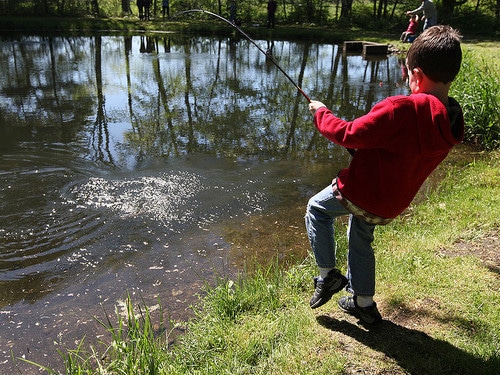
When you are heading out to fish with the kids, try to select a place that will suit them best.
Typically, this means a place with a long, open stretch of bank or a roomy dock; if you have access to a boat, you have more flexibility, but you still want to select a location that will work best for the kids.
Here are couple of other things to keep in mind when trying to choose the fishing spot:
1) Young anglers often have difficulty casting and they are likely to get their lures snagged on every object in the vicinity, so try to pick a wide-open location, without a lot of trees, rocks or weeds.
2) You also want to avoid crowded locations, to help ensure everyone stays safe and that your children won’t disturb other anglers.
3) Remember that children have short attention spans and fishing is an activity that requires patience. The best way to keep them focused on the task at hand it to catch fish; kids won’t enjoy staring at a float for very long unless they are getting nibbles.
Accordingly, you should target easy-to-catch species and try to fish in locations that are full of them.
4) Finally, don’t forget that children will need easy access to a bathroom, and they’ll probably want drinks and snacks during the outing.
Refreshments are easy to bring from home, but you may have to do a little homework to find a suitable fishing location with nearby bathrooms. Small ponds at local ponds are often a good option, and these locations often provide easy fishing opportunities for the kids.
Types of Fish Worth Targeting
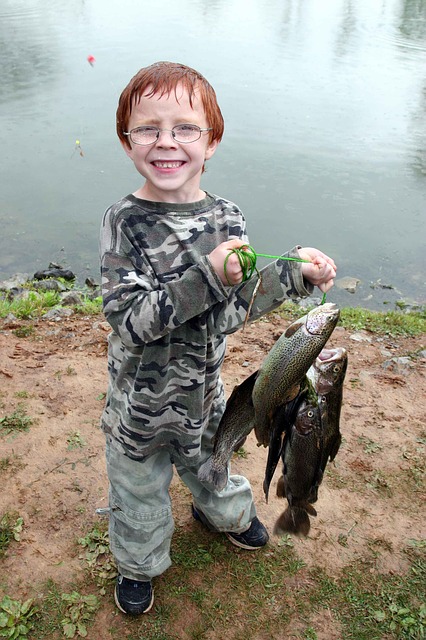
Some fish species make better targets for young kids than others do. For example, largemouth bass are often sage inspectors of lures, and it can take all of the finesse an experienced adult can muster to entice them to bite.
Accordingly, they aren’t usually a good species to target with first-timers. The same could be said of many other species, such as trout and walleye.
However, several other species are well-suited for young anglers. This includes:
Panfish
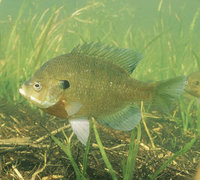 Although this primarily means bluegill, most of what can be said about bluegill applies to other panfish, including green sunfish, shell crackers and red-breasted sunfish.
Although this primarily means bluegill, most of what can be said about bluegill applies to other panfish, including green sunfish, shell crackers and red-breasted sunfish.
Bluegill and their relatives can often be caught throughout the day, and they tend to congregate in distinct areas, which means that once you find one, you can probably find more in the same spot.
Catfish
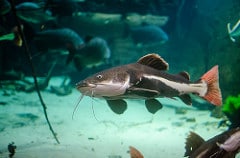 Catfish often take more patience to catch than panfish, but they also give your child a chance to drag up a reasonably big fish. Also, children may be amused by some of the more unusual baits used to catch catfish, such as hot dogs and grapes.
Catfish often take more patience to catch than panfish, but they also give your child a chance to drag up a reasonably big fish. Also, children may be amused by some of the more unusual baits used to catch catfish, such as hot dogs and grapes.
Catfishing is traditionally done at night, but you can catch catfish at any hour of the day.
Stocked Trout
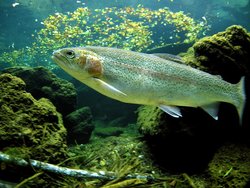 Trout living in rivers or large lakes are not easy for children to catch.
Trout living in rivers or large lakes are not easy for children to catch.
However, many places provide stocked trout ponds, specifically designed for young anglers. These ponds tend to have a no-catch, no-pay policy, so the owners do their best to keep the trout hungry and accustomed to the presence of people, which makes them pretty easy for youngsters to catch.
As a bonus, many such places have tackle the kids can use for a small fee, which alleviates the need to purchase their gear.
The Best Baits for Young Anglers
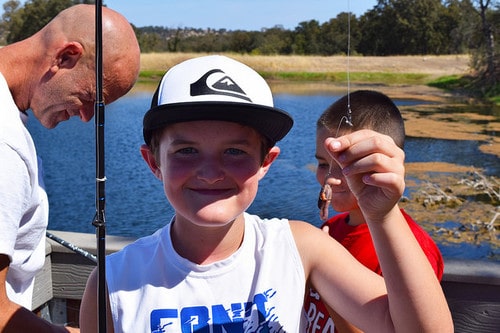 Bait selection is a controversial topic among adult anglers, but when fishing with children, it’s best to keep things simple.
Bait selection is a controversial topic among adult anglers, but when fishing with children, it’s best to keep things simple.
Your basic choices include worms, crickets and bread.
Each has its own set of benefits and drawbacks, but any of the three can help you achieve success with your kids:
Worms – Worms are the quintessential fish bait, and they work very well for most species you’re likely to target with your kids including panfish and catfish, as well as more ambitious quarry, such as bass and trout.
Worms are available at virtually every bait store in the world, but you can also go digging for them yourself. In fact, your kids may find this part of the outing more fun than actually fishing.
Many people make the mistake of using the biggest worms – usually nightcrawlers – they can find; however, many times, red wigglers, which are much smaller, work best for bluegill.
Crickets – Crickets are also very effective bait, and they often elicit more strikes than worms do (particularly in heavily fished places, in which the local panfish become wary of worms). They also work better with small hooks than worms do, and are often less vulnerable to “bait thief” fish.
Crickets are often a bit more difficult to find at bait shops than worms are, but you can often purchase them at larger pet stores, who sell them at very affordable prices as food for lizards and turtles.
You can also try to catch your own crickets, although grasshoppers – who work nearly as well – are often easier to catch en masse.
Bread – In some places, particularly those with dense populations of bluegill, catfish or carp, you can often catch fish with nothing more than a bit of bread.
Squish the bread up into a small ball and just stick it on the hook as though it were a cricket or worm. Bread doesn’t last very long in the water, but because it isn’t “gross,” many kids will enjoy learning to bait their own hook with bread when necessary.
Rules and Regulations
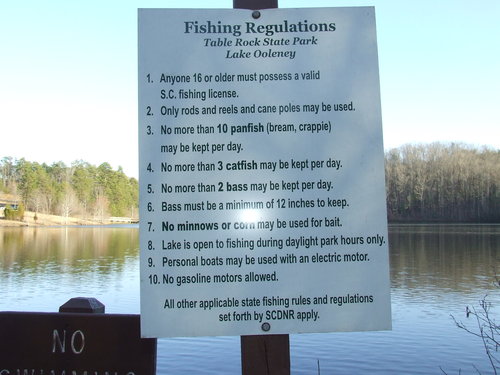
Always be sure to investigate the rules and regulations in effect before heading out to the fishing hole.
Most municipalities and jurisdictions allow youngsters under an established age to fish without obtaining a license of any kind, but the age at which this occurs varies.
You don’t want to end up on the wrong side of the law on your child’s very first fishing trip, so make sure you find out the relevant laws and follow them to the letter.
Some municipalities host “free fishing” days for kids or families, which can give you a chance to gauge your youngster’s enthusiasm for the activity before outlaying significant funds. Additionally, many locations allow fishermen and fisherwomen of all ages to fish private lakes without obtaining a license, and this is worth investigating.
Don’t forget to familiarize yourself with all of the other pertinent rules too. Be sure that you know the legal seasons for fishing, any species-specific regulations that are appropriate and tackle limitations.
Teaching the Importance of Conservation
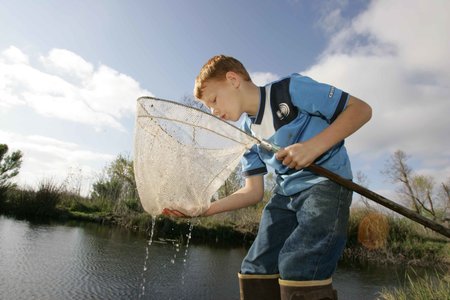 When you introduce your children to fishing, it is important to consider the totality of the event. This not only means catching fish, staying safe and having fun, but it also means understanding the importance of conservation and empathy.
When you introduce your children to fishing, it is important to consider the totality of the event. This not only means catching fish, staying safe and having fun, but it also means understanding the importance of conservation and empathy.
For example, while it is perfectly acceptable to catch some fish for the dinner table every once in a while, recreational anglers should practice catch-and-release fishing.
Explain the basic principle of the practice to your child as well as the reasons for doing so. Most kids will be only too happy to help protect the fish, and you’ll have started your young angler’s fishing career on the right foot.
Teach Them Good Habits Early On
Additionally, as most experienced anglers are already aware, litter is a big problem around many lakes and rivers. Many popular fishing locations are lousy with old lures, bait cups and bundles of line, all of which threaten wildlife and ruin the aesthetics of these otherwise-gorgeous locations.
Point out examples of litter to your youngsters and discuss its impact on the local environment. Impress upon them the importance of proper trash disposal and consider bringing along a small trash bag to collect some of the debris strewn on the ground (keep safety in mind: don’t allow them to pick up broken glass or lures with sharp hooks).
Have a Blast!
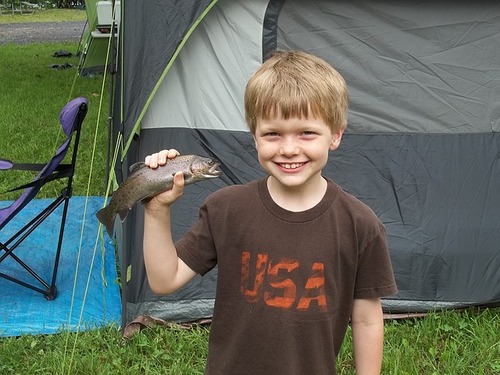 Above all else, make sure that your child’s first fishing experience is fun.
Above all else, make sure that your child’s first fishing experience is fun.
You’ll need to remain patient and flexible to do so, but the rewards will justify your efforts.
After all, fishing is fun – you just need to show them that it is. Don’t worry if your 6-year-old is more interested in feeding the ducks than catching fish. She’s still hanging out with mom or dad by the lake, which is still a valuable experience.
Make It Easy
Similarly, be ready to give up the best casting angles and fishing spots to your kids to ensure they have the best chance of catching fish. This is especially important for older children, who may become frustrated if they aren’t successful.
You can even consider casting and setting the hook yourself, and then passing the rod off to your young one, who can then reel in the giant fish – this is, after all, the fun part.
Take Breaks
Don’t be afraid to allow your youngsters a bit of a break every so often. They may have an hour of fishing in them, but they may not be able to harness this whole hour at one time.
You may be surprised how a 15-minute-break spent chasing their siblings or looking at birds through binoculars will recharge their interest in fishing.
Fishing Comfortably
Also, remember that comfort goes a long way with children.
Make sure to dress them appropriately for the weather, and bring along all the necessary sun screen and bug spray you need to keep them happy.
Just like you, they’ll remember the sights and sounds of their first fishing trip, as long as you help provide the smiles.





